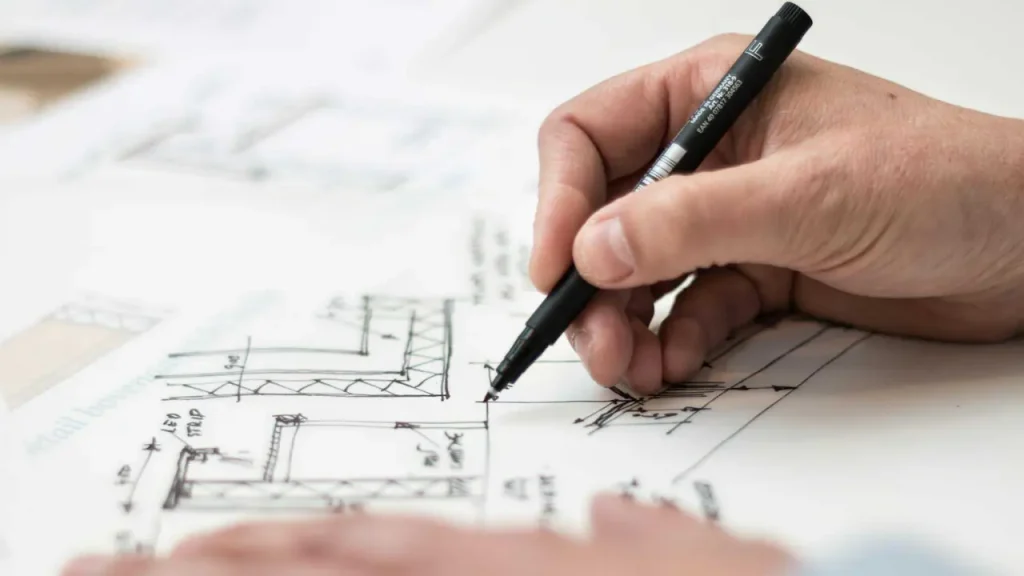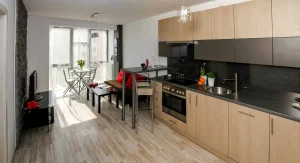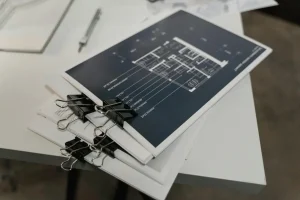
Smart Housing Architecture Explained
Let’s talk about homes. Not just the bricks-and-mortar structures, but the very concept of what a home should be. I grew up in a house where the most advanced technology was a temperamental thermostat that my dad was constantly at war with. You nudged it, you waited, and maybe, just maybe, the temperature would change. Today, that entire battle is obsolete, replaced by a concept that feels both futuristic and incredibly intuitive: Smart Housing Architecture. It’s a term that gets thrown around a lot, but it represents a fundamental shift in how we design, build, and interact with our living spaces. This isn’t about novelty gadgets or voice-activated lightbulbs, though those are part of it. It’s about creating an ecosystem. A living, breathing environment that anticipates our needs, conserves resources, and genuinely makes life easier.
Introduction to Smart Housing Architecture
At its core, Smart Housing Architecture is the blueprint for creating automated, responsive, and efficient homes. It’s the thoughtful integration of technology directly into the fabric of a building, rather than adding it as an afterthought. This means planning for connectivity, sensor placement, and system interoperability from the earliest design stages. Think of it as the central nervous system of a house, connecting every component and allowing them to communicate and act in concert. It’s a huge leap forward.
What Defines Smart Housing Architecture?
So, what is smart housing architecture, really? It’s defined by the seamless fusion of technology and design to create a home that is more than the sum of its parts. It’s a residence that can learn your habits, optimize its own energy consumption, and provide a level of security and convenience that was once the stuff of science fiction. The goal of this superior approach is to make the technology disappear, leaving you with an experience that feels effortless and natural. You don’t manage the house; the house works with you.
The Evolution of Intelligent Home Design
This didn’t happen overnight. The journey started with simple home automation—timers for lights, programmable thermostats. Clunky, isolated systems. But the explosion of the Internet of Things (IoT), coupled with advancements in artificial intelligence and wireless communication, has completely changed the game. Intelligent home design has evolved from single-task devices to a holistic framework. Today’s advanced systems create a cohesive environment where every system, from HVAC to entertainment, is interconnected and intelligent.
Core Components of an Intelligent Home
To truly appreciate the scope of modern home design, we need to break down its foundational pillars. These are the elements that work together to transform a conventional house into a truly smart home, and they represent this core philosophy.
Integrated Automation and Connectivity
This is the backbone. True smart homes thrive on integrated automation, where different systems communicate flawlessly. Your morning alarm could trigger the coffee maker to start brewing, the blinds to slowly open, and the thermostat to adjust to your preferred temperature. This symphony of actions is made possible by a robust central network. And this is all about integrating IoT devices in homes, making sure every sensor, smart appliance, and controller speaks the same language. It’s a complex dance of data and commands, orchestrated to make your daily routines smoother.
Enhancing Energy Efficiency and Sustainability
One of the most powerful applications of smart technology is in resource management. We’re talking about energy efficient smart home architecture that actively works to reduce your carbon footprint—and your utility bills. Imagine a house that monitors weather forecasts and solar panel output to decide the best time to run the washing machine, or that uses occupancy sensors to ensure lights and air conditioning are never left on in an empty room. These aren’t just small tweaks; they add up to significant savings and a more responsible way of living. This focus on sustainable smart housing solutions is a key driver in the evolution of residential construction, making green living more accessible and automated than ever before.
Advanced Security and Safety Systems
Forget a simple burglar alarm. Smart security is proactive and comprehensive. It includes high-definition cameras you can monitor from anywhere, smart locks that grant temporary access to visitors, and sensors that can detect everything from a broken window to a water leak. Some of the most valuable smart home security system features are the ones you hope you never need, like integrated smoke and carbon monoxide detectors that not only sound an alarm but also shut down your HVAC system to prevent smoke from spreading and notify emergency services automatically. This level of protection offers unparalleled peace of mind. It’s a dynamic shield for your home.
Maximizing Comfort and Convenience
Ultimately, a home should be a sanctuary of comfort. This is where you see how smart housing improves daily life in very tangible ways. It’s about creating personalized environments. Think lighting that adjusts its color temperature throughout the day to match your circadian rhythm, multi-room audio systems that follow you from room to room, and voice commands that can manage nearly any aspect of your environment. This is the fun part, the tangible reward of living within a well-designed smart home.
Technologies Driving Smart Housing Innovation
The magic behind the curtain is a suite of powerful technologies that have matured and become more accessible. Understanding these drivers helps explain how we got here and where we’re going. Ongoing innovation in this field depends on these technologies.
The Role of IoT Devices and Sensors
The Internet of Things (IoT) is the sensory network of the smart home. Billions of tiny, connected devices—motion sensors, temperature sensors, light sensors, smart plugs—are the eyes and ears of your home. They collect the real-time data needed for the system to make intelligent decisions. Without IoT, the smart home is just a collection of remote-controlled gadgets; with it, it becomes a truly responsive environment. The proliferation of these devices is a key part of what makes this architectural shift possible today.
Artificial Intelligence in Home Management
If IoT devices are the nerves, artificial intelligence (AI) is the brain. AI and machine learning algorithms analyze the data collected by sensors to identify patterns and learn your preferences. This is what allows a home to move from reactive to predictive. Instead of you telling the thermostat to turn down, the system learns your schedule and does it for you. The use of artificial intelligence for home automation is what creates that feeling of a home that truly understands you. It’s a bit spooky at first, but incredibly useful.
Future-Proofing with Advanced Network Technologies
All this data needs a superhighway to travel on. A home filled with smart devices can quickly overwhelm a standard Wi-Fi network. That’s why forward-thinking design plans for robust networking from the start, incorporating technologies like Wi-Fi 6, mesh networks, and even hardwired connections for critical systems. This ensures reliability and provides the bandwidth needed for future innovations. You have to build for what’s coming, not just for what’s here now.
Transformative Benefits of Smart Architecture
Why go through all the trouble? The advantages extend far beyond simple convenience. The benefits of intelligent home design are multifaceted, impacting our lives, our planet, and our finances. Properly executed, it delivers on multiple fronts.
Improving Quality of Life for Residents
At the end of the day, this is what it’s all about. A smart home reduces friction in our daily lives. It automates mundane tasks, enhances security, and creates a more comfortable and pleasant atmosphere. For busy parents, it’s a helping hand. For the elderly or those with mobility issues, it’s a powerful tool for independence. The cumulative effect is a significant boost in overall well-being.
Contributing to a Greener Environment
The collective impact of smart homes on energy consumption can be massive. By optimizing the use of electricity, water, and gas, each home contributes to a larger conservation effort. When you multiply these savings across entire neighborhoods and cities, you see a clear path toward a more sustainable future. This approach is, by its very nature, green architecture.
Increasing Property Value and Appeal
Let’s be practical. A well-executed smart home is a major selling point. In an increasingly tech-savvy market, features like integrated automation and energy efficiency are becoming expected amenities. Investing in smart technology is no longer just a luxury; it’s a strategic move for improving property value with smart housing. It makes a property more desirable, more marketable, and ultimately, more valuable. This investment often pays for itself.
Navigating the Challenges of Smart Home Implementation
Of course, it’s not a completely seamless utopia. There are real hurdles to overcome, and it would be dishonest to ignore them. Any responsible discussion on the topic must address the potential pitfalls and complexities.
Addressing Data Privacy and Cybersecurity
This is the big one. A home that collects data about your habits is a treasure trove for marketers and a target for hackers. Ensuring data privacy in smart homes is paramount. This means choosing reputable brands with strong encryption standards, using secure passwords, and being mindful of what information you share. The conversation around smart home security and privacy must continue to be a priority for both consumers and manufacturers.
Understanding Installation and Maintenance Costs
There’s no getting around it: the initial cost of smart home installation can be significant. While basic DIY solutions are affordable, a fully integrated system requires professional planning and installation. There are also potential maintenance costs and the eventual need to upgrade obsolete technology. It’s an investment, and it needs to be budgeted for accordingly.
Ensuring System Compatibility and Interoperability
The tech world is famous for its “walled gardens.” Getting devices from different manufacturers to work together can be a massive headache. This is one of the main challenges of smart home integration. Choosing a single ecosystem (like Apple HomeKit, Google Home, or Amazon Alexa) can simplify things, but it can also be limiting. Standards like Matter are aiming to solve this, but we’re not quite there yet. This makes careful planning a critical part of the process.
The Future of Smart Housing and Urban Living
The evolution is far from over. We are standing at the precipice of even more profound changes in how our homes and cities function. The future trends in smart housing point towards deeper integration and greater intelligence.
Predictive Automation and Personalized Living Spaces
The next frontier is predictive automation. Your home won’t just react to your commands or learned schedules; it will anticipate your needs based on a wide array of data points—your calendar, your biometric data, even the traffic on your commute. This leads to truly personalized smart home environments that adapt to your mood, health, and activities in real-time. This is its ultimate expression.
Integrating Smart Homes with Smart City Initiatives
A smart home doesn’t exist in a vacuum. The future involves smart housing and smart city integration, where homes communicate with the municipal grid to manage energy demand, interface with public transit systems, and connect to community-wide emergency alert networks. Your house becomes an active, helpful node in a larger urban organism.
Designing for Accessibility and Inclusivity
One of the most exciting future applications is in universal design. The principles of smart architecture can be used for designing smart homes for seniors and individuals with disabilities, offering unprecedented levels of independence. Voice control, automated environmental adjustments, and remote health monitoring can make homes safer and more accessible for everyone, regardless of age or ability.
Conclusion: Embracing the Era of Smart Living
The concept of smart housing is no longer a futuristic dream. It’s a present-day reality that is reshaping our world, one home at a time. While there are challenges to navigate, from security concerns to installation costs, the benefits are undeniable. We are moving beyond the house as a passive shelter and into an era of the home as an active partner—one that enhances our comfort, secures our families, and protects our planet. It’s an exciting time to be a homeowner. Welcome to the future.






